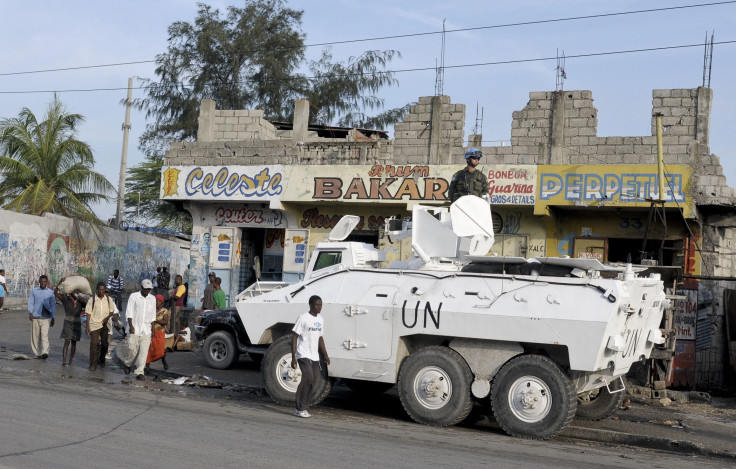Haiti's Fate Is Decided In Washington: How International Organizations Are Carrying The Poorest Nation In The Americas

Four years after a devastating earthquake that wrecked the country in early 2010 and killed up to as many as 160,000 people, Haiti still bears scars. With a failing government and a damaged economy, the impoverished Caribbean nation has increasingly depended upon its wealthy and powerful neighbor to the north, the United States.
Haiti, the poorest nation in the Western hemisphere, according to the World Bank, has depended upon foreign aid for decades, but since the 2010 natural catastrophe, that dependence has skyrocketed. The Port-au-Prince government is failing, the country remains in ruins -- and desperately needed infrastructure and reconstruction projects are firmly in foreign control.
“There have been advances … but they are slow,” said Jose Agustín Aguerre, director of the Haiti department at the Washington D.C.-based Inter-American Development Bank (IADB), one of the international organizations that are overseeing the aid programs in the country.
After the earthquake, the IADB, which created a specific department for Haiti, canceled the country’s outstanding debt, which amounted to some $487 million. Subsequently, the organization decided to donate money to Haiti, rather than issue loans: every year until 2020, Haiti will received $200 million to use for improvements in transportation, energy, water, education, agriculture and development of the private sector.
Aguerre’s principal job is to negotiate with the Haitian government to determine what projects will receive what amount of funding. Subject to mutual approval, such plans are carried out by Haiti with the help of IADB’s 100-person staff in Port-au-Prince, and 50-person team in Washington.
The IADB is one of several international organizations that have taken an all-hands-on-deck approach to rebuilding Haiti from their headquarters in the U.S. capitol, along with the World Bank, the International Monetary Fund (IMF) and the U.S. Agency for International Development (USAID).
According to the United Nations, IADB was the largest donor of funds to Haiti between 2010 and 2012, with $491.7 million – an amount greater than even that provided by several major western countries, including Canada ($374.8 million), the U.S. ($298.1 million) and Spain ($292.5 million.). The World Bank ranks fifth, with $287.4 million in donations, with the IMF at ninth at $152.4 million.
The World Bank and the IMF have a similar modus operandi as the IADB -- projects in need of funding are negotiated with the Haitian government and approved by their senior officials in Washington.
However, some have criticized the bureaucratic system as inefficient and slow.
Robert Fatton, professor of political science at the University of Virginia, lamented that only a minimum portion of donations earmarked for Haitian development actually reach the Haitian government and local entities, although he conceded that corruption at high levels in Port-au-Prince’s government complicates matters.
Meanwhile, Haitians suffer under grinding poverty.
According to a group called Haiti Partners, a network of educators, church and community leaders, which engages in development projects in Haiti, gross national income per capita in Haiti amounts to $660, about one-half the total found in Nicaragua, the second poorest country in the Americas. More than three-quarters (78 percent) of Haitians live in poverty, that is, surviving on less than $2 a day, while more than half (54 percent) live in extreme poverty (less than $1 per day). In rural areas things are even worse; poverty and extreme poverty rates are estimated to be 84 percent and 69 percent, respectively.
In addition, more than two-thirds of the workforce do not have formal jobs, and one-half of children under the age of five are malnourished.
© Copyright IBTimes 2024. All rights reserved.




















